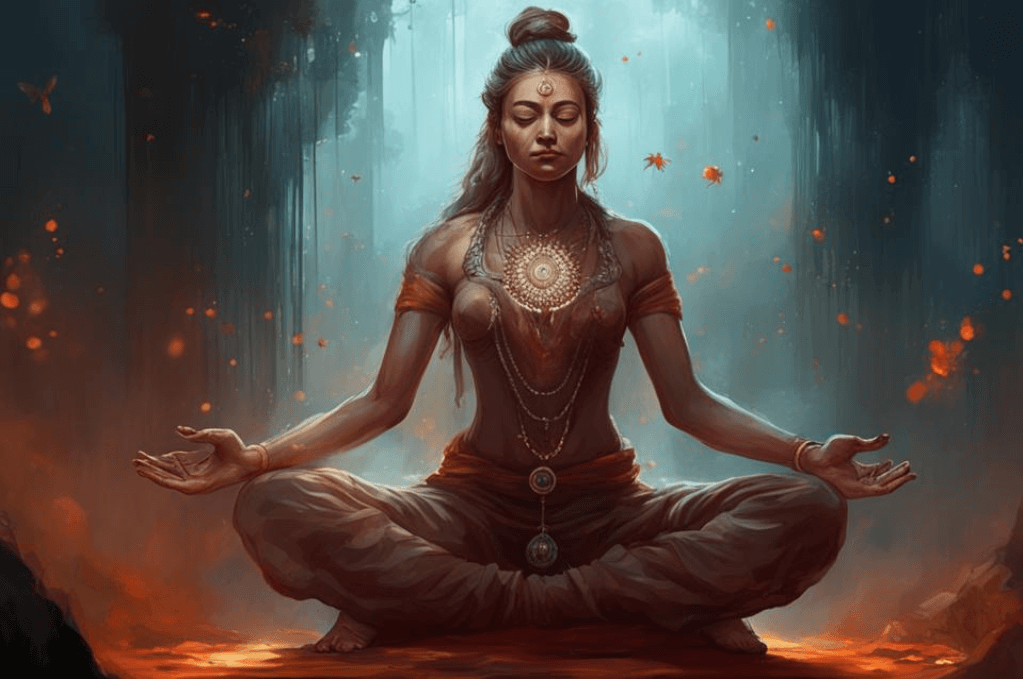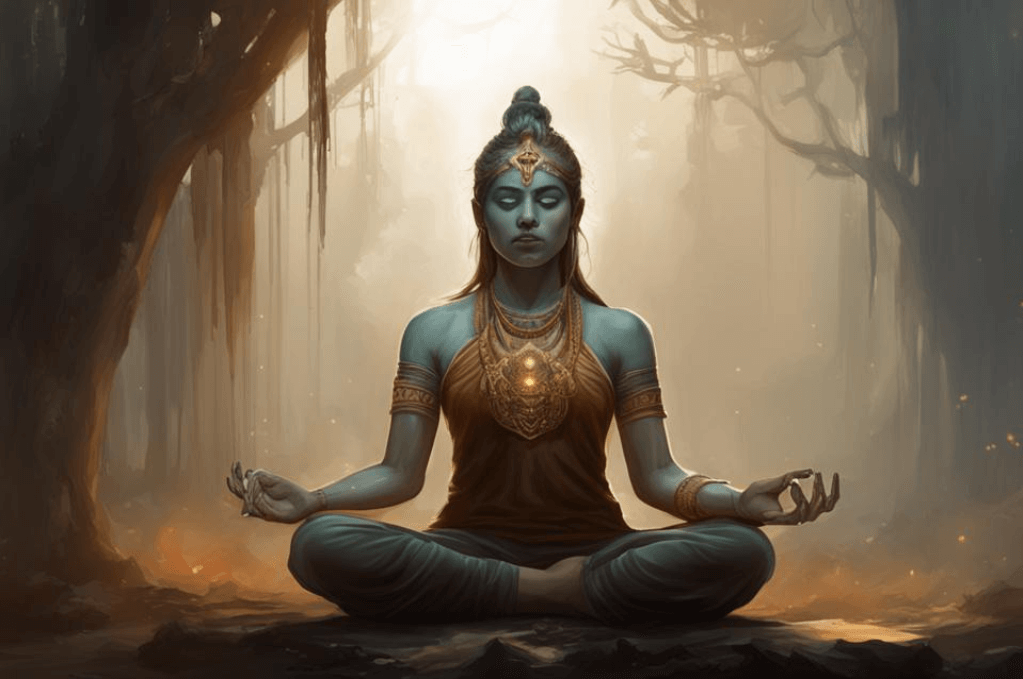Have you ever noticed how taking a deep breath can instantly calm your mind? That’s the power of pranayama, a set of breathing techniques that have been used for centuries in yoga to promote mental well-being. Pranayama is all about harnessing the energy within our breath, known as prana, to create a sense of peace and tranquility. In this article, we will explore the different pranayama techniques that can help you achieve a calm mind. So, let’s dive in and discover the incredible power of breathing techniques!
Contents
I. Understanding Pranayama
II. The Science Behind Calming Effects
III. Pranayama Techniques for a Calm Mind
IV. Incorporating Pranayama into Daily Life
V. Precautions and Considerations
VI. Conclusion
I. Understanding Pranayama

Pranayama is a practice that involves controlling and regulating our breath. It comes from ancient yoga traditions and is believed to have a powerful impact on our mental well-being.
In pranayama, the breath is seen as a vital life force called prana. By working with our breath, we can influence our energy levels and bring balance to our mind and body.
There are different types of pranayama techniques, each with its own benefits. Some techniques focus on deep breathing, which helps us to relax and calm our mind. Others involve alternate nostril breathing, which balances the two sides of our brain and enhances mental clarity. Ujjayi breathing, characterized by an audible breath, can help us stay focused and centered. Bhramari pranayama, where we hum during the exhalation, has a soothing effect on the mind. Kapalabhati, a cleansing breath, can energize us and improve mental clarity.
By practicing pranayama, we can experience physiological changes in our body. It can help regulate our heart rate, lower blood pressure, and activate the parasympathetic nervous system, which promotes relaxation and reduces stress.
Scientific studies have also shown that pranayama can be effective in reducing stress, managing anxiety, and improving overall mental well-being.
Understanding pranayama and its various techniques can empower us to incorporate this practice into our daily lives, leading to a calmer and more peaceful mind.
II. The Science Behind Calming Effects

Breathing may seem like a simple act, but it actually has a profound impact on our mental state. When we practice pranayama, we are intentionally controlling our breath, which triggers a series of physiological changes in our body that help to calm the mind.
When we take slow, deep breaths, our body activates the parasympathetic nervous system, which is responsible for the “rest and digest” response. This response counteracts the effects of the sympathetic nervous system, which is responsible for the “fight or flight” response. By activating the parasympathetic nervous system, we can reduce stress and anxiety.
Scientific studies have shown that practicing pranayama can significantly reduce stress levels and improve our overall well-being. For example, researchers have found that deep breathing can lower blood pressure and heart rate, which are indicators of relaxation. Additionally, studies have shown that pranayama techniques can help regulate the levels of stress hormones, such as cortisol, in our body.
Controlled breathing also has a direct impact on our brain. It stimulates the vagus nerve, which is responsible for regulating our mood and emotions. This stimulation can lead to a sense of calmness and improved mental clarity.
Overall, the science behind pranayama suggests that by consciously controlling our breath, we can activate our body’s relaxation response, reduce stress, and promote a calm mind.
III. Pranayama Techniques for a Calm Mind

To achieve a calm mind, there are specific breathing techniques called pranayama that can be practiced. These techniques have been used for centuries in ancient yoga practices and can have a powerful impact on our mental well-being.
1. Deep Breathing: One simple technique is deep breathing, where you consciously take slow, deep breaths. This helps to relax the body and mind, reducing stress and anxiety.
2. Alternate Nostril Breathing: This technique involves breathing through one nostril at a time. It helps to balance the brain hemispheres, promoting mental clarity and focus.
3. Ujjayi Breathing: Ujjayi breathing is characterized by a soft, audible breath. It helps to calm the mind and enhance concentration during meditation or yoga practice.
4. Bhramari Pranayama: Bhramari pranayama involves making a humming sound while exhaling. This technique has a soothing effect on the mind and can help relieve tension and anxiety.
5. Kapalabhati: Kapalabhati is a cleansing breath that involves forceful exhalations through the nose. It energizes the body and mind, improving mental clarity and focus.
By incorporating these pranayama techniques into your daily routine, you can experience the benefits of a calm mind. Start slowly, listen to your body, and consider learning from a qualified instructor to ensure proper practice. With consistent practice, you can enjoy long-term positive effects on your mental well-being.
IV. Incorporating Pranayama into Daily Life

Pranayama techniques can be easily incorporated into your daily routine to promote a calm mind. Here are some simple tips to help you get started:
A. Create a regular pranayama practice: Set aside a specific time each day to practice pranayama. It could be in the morning to start your day off on a calm note or in the evening to unwind and relax before bed.
B. Find a suitable location: Choose a quiet and peaceful space where you can practice without distractions. It could be a corner in your home, a park, or even your office if you need a quick break during the day.
C. Integrate pranayama with meditation or mindfulness: If you already have a meditation or mindfulness practice, consider incorporating pranayama into it. Start with a few minutes of pranayama before or after your meditation session to enhance its benefits.
Remember to start slowly and listen to your body during practice. If you feel any discomfort or strain, adjust your breathing or seek guidance from a qualified instructor. With consistent practice, you will begin to experience the long-term positive effects of pranayama on your mental well-being.
V. Precautions and Considerations

Before you start practicing pranayama, it’s important to keep a few things in mind:
1. Learn from a qualified instructor: Pranayama involves specific breathing techniques, so it’s best to learn from a qualified instructor who can guide you safely and effectively.
2. Be aware of contraindications: Some pranayama techniques may not be suitable for everyone. If you have any respiratory conditions, high blood pressure, or other health concerns, it’s important to consult with a healthcare professional before starting pranayama.
3. Start slowly and listen to your body: As with any new practice, it’s important to start slowly and gradually increase the duration and intensity of your pranayama practice. Pay attention to how your body responds and make adjustments accordingly.
Remember, pranayama is meant to be a gentle and beneficial practice. By taking these precautions and considerations into account, you can ensure a safe and enjoyable experience while reaping the benefits of a calm mind.
VI. Conclusion
In conclusion, practicing pranayama can have a powerful impact on calming the mind. By focusing on our breath, we tap into our life force energy, promoting a sense of peace and tranquility. Scientific research supports the effectiveness of pranayama in reducing stress and anxiety. Incorporating techniques like deep breathing, alternate nostril breathing, ujjayi breathing, bhramari pranayama, and kapalabhati into our daily lives can bring about mental clarity and relaxation. It’s important to learn pranayama from a qualified instructor and listen to our bodies during practice. So, why not give pranayama a try and experience its long-term benefits for your mental well-being?











